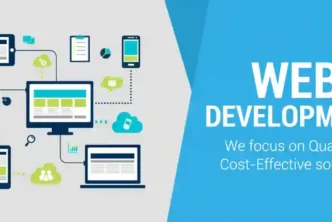In the competitive landscape of 2024, mastering backlink monitoring is crucial for business owners, marketing professionals, and AI experts. As search engines evolve and algorithms become more sophisticated, understanding the intricacies of backlink monitoring can be the difference between success and obscurity. This comprehensive guide will delve into best practices for backlink monitoring, providing actionable insights to help you stay ahead.
Understanding Backlink Monitoring
Backlink monitoring involves tracking and analyzing the incoming links to your website. These backlinks are essential for search engine optimization (SEO) as they signal to search engines that your site is credible and authoritative. Regular monitoring ensures that your website maintains a healthy backlink profile, which can significantly impact your search engine rankings.
The Importance of Backlink Monitoring
Keeping an eye on your backlink service orders helps you detect harmful links that could negatively affect your rankings. Spammy or low-quality links can trigger penalties from search engines, which can be challenging to recover from. Moreover, monitoring allows you to capitalize on valuable link opportunities, ensuring that your link-building efforts yield the best results.
Getting Started with Backlink Monitoring
To begin, you’ll need a reliable backlink monitoring tool. Tools like Ahrefs, Moz, and SEMrush provide comprehensive backlink analysis, including data on new, lost, and toxic links. Once you’ve chosen a tool, set up alerts for any changes in your backlink profile, ensuring that you can respond promptly to any issues that arise.
Example: Using Ahrefs for Backlink Monitoring
Ahrefs offers a robust backlink monitoring feature. By entering your domain, you can view detailed reports on your backlinks, including metrics like domain rating and anchor text distribution. Setting up alerts in Ahrefs allows you to receive notifications whenever new links are added or removed, helping you stay proactive in managing your backlink profile.
Best Practices for Backlink Monitoring in 2024
With the basics covered, let’s explore the best practices for effective backlink monitoring in 2024. These strategies will help you maintain a healthy backlink profile and boost your SEO performance.
1. Regularly Audit Your Backlink Profile
Conducting regular audits of your backlink profile is essential. Aim to perform these audits at least once a month. During an audit, scrutinize the quality of your backlinks, looking out for any that may be harmful or irrelevant. Tools like Moz’s Link Explorer offer comprehensive backlink analysis, making it easier to identify potential issues.
Steps for Conducting a Backlink Audit
- Export your backlink data from your chosen tool.
- Sort the data by quality metrics such as domain authority, relevance, and anchor text.
- Identify any potentially harmful links and create a disavow file.
- Submit the disavow file to Google Search Console to ensure those links do not impact your site’s ranking.
Example: Auditing with SEMrush
SEMrush’s Backlink Audit tool simplifies this process by allowing you to categorize your backlinks based on toxicity scores. This feature helps you quickly identify harmful links and take appropriate action to protect your site’s SEO health.
2. Monitor Competitor Backlinks
Keeping an eye on your competitors’ backlinks can provide valuable insights and opportunities. By analyzing their backlink profiles, you can identify potential linking domains and strategies that could benefit your site.
Steps for Monitoring Competitor Backlinks
- Identify your main competitors using tools like SEMrush or Ahrefs.
- Analyze their backlink profiles to uncover linking domains and anchor texts.
- Reach out to these domains to explore potential link-building opportunities for your site.
Example: Competitor Analysis with Moz
Moz’s Link Explorer provides a competitive analysis feature that allows you to compare your backlink profile with those of your competitors. By identifying gaps and opportunities, you can refine your link-building strategy and stay ahead of the competition.
3. Leverage AI for Backlink Monitoring
Artificial intelligence (AI) is revolutionizing backlink monitoring. AI-powered tools can analyze vast amounts of data quickly, identifying patterns and trends that may not be immediately apparent. Leveraging AI can enhance your backlink monitoring efforts, providing deeper insights and more accurate analysis.
Steps for Implementing AI in Backlink Monitoring
- Choose an AI-powered backlink monitoring tool that suits your needs.
- Integrate the tool with your existing SEO and analytics platforms.
- Use the insights provided by the AI tool to refine your link-building strategy and address any issues promptly.
Example: AI-Powered Monitoring with Linkody
Linkody uses AI to provide real-time backlink monitoring and analysis. The tool’s machine learning algorithms can detect anomalies and predict potential issues, helping you maintain a healthy backlink profile more effectively.
4. Engage in Active Link Building
According to a top SEO backlinks service, rroactively seeking high-quality backlinks is essential for maintaining a strong backlink profile. Focus on building relationships with authoritative websites within your industry. Guest blogging, influencer collaborations, and content partnerships are effective strategies for acquiring valuable backlinks.
Steps for Active Link Building
- Identify authoritative websites and influencers within your industry.
- Create high-quality, valuable content that appeals to these potential link partners.
- Reach out to these websites and influencers with personalized pitches, highlighting the mutual benefits of linking to your content.
Example: Guest Blogging for Link Building
Guest blogging on reputable industry blogs can provide high-quality backlinks. By contributing valuable content to these blogs, you can earn backlinks that enhance your site’s authority and visibility.
5. Continuously Monitor and Adapt
Backlink monitoring is not a set-it-and-forget-it task. Continuously monitor your backlink profile and adapt your strategies as needed. Stay updated with the latest SEO trends and algorithm changes to ensure your backlink monitoring efforts remain effective.
Steps for Continuous Monitoring and Adaptation
- Set up automated alerts in your backlink monitoring tool for any significant changes.
- Regularly review your backlink profile and address any issues promptly.
- Stay informed about the latest SEO trends and algorithm updates to refine your strategies accordingly.
Example: Using Google Alerts for Monitoring
Google Alerts can complement your backlink monitoring efforts by notifying you of any mentions of your brand or website. This can help you identify new backlink opportunities and address any potential issues quickly.
Summing Up
Mastering backlink monitoring in 2024 requires a proactive and strategic approach. By regularly auditing your backlink profile, monitoring competitors, leveraging AI, engaging in active link-building, and continuously adapting your strategies, you can maintain a healthy backlink profile and boost your SEO performance. As the digital landscape evolves, staying ahead of the curve will ensure your business remains competitive and successful.
Start implementing these best practices today, and watch your website’s authority and visibility soar. Remember, effective backlink monitoring is an ongoing process that requires dedication and attention to detail. By following the steps outlined in this guide, you’ll be well on your way to mastering backlink monitoring in 2024 and beyond. Happy monitoring!





